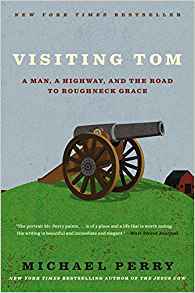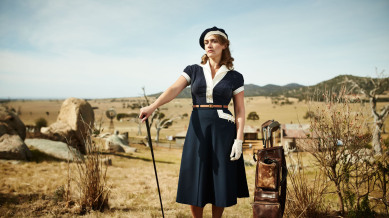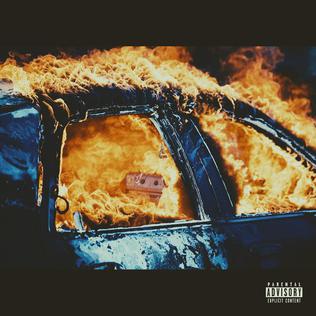
Michael Perry writes about where the rubber of everyday life meets the road in rural Wisconsin. This book is hung on a framework of visits to a neighbor down the road, a guy named Tom, married to Arlene, coming up on his sixtieth wedding anniversary. A while back the government pushed an interstate through the front yard of their once peaceful farm and now their life is lived to the sound of eight million vehicles driving by every year. Tom builds things, parts for vehicles and tractors, and cannons, too, that he will fire off for you if he’s in the mood to.
Perry admires Tom as a man, a husband, a father and a craftsman who can build from scratch everything from the aforesaid cannon to a part for a fifty-year old tractor. Perry met Tom and Arlene through his wife, Anneliese.
Very early on–perhaps the third or fourth time Anneliese and I visited the Hartwigs–Tom must have seen hearts in my eyes, because while Arlene and Anneliese were in the other room, he had a word with me.
“That girl there,” he said, indicating Anneliese. “You know she was on my hay crew?”
“Yes, sir,” I said.
“Outworked any boy I ever hired,” said Tom, and nothing more was said.
Late, upon reflection, I realized this was intended less as a testament to Anneliese’s character than as a challenge to my own.
Channeling his nascent Tom, Perry builds a sign to keep trespassers off his farm.
…[I] rummaged through the scrap lumber pile until I located two mismatched boards of sufficient length to carry the lettering. Using a jackknife-sharpened pencil, I sketched the word PRIVATE on the first board, and the word DRIVE on the second. Next I sorted through my collection of half-used cans of wasp killer and WD-40 until I found a canister of bloodred spray paint. I shook it until the rattle ball went silent, then purposely oversprayed the pencil tracings so that here and there the excess paint ran in exsanguinous streaks. Then being a stickler for detail, I fetched and loaded my Ruger Super Redhawk .44 Magnum, leaned the boards against a box elder stump, and from a civilized ten paces, drew down the seven-inch barrel and blew six 240-grain slugs through the signage…
He puts it up at the foot of the drive, and then
I realized that for all my effort, I had fallen short by a single critical degree…I unscrewed the topmost board and returned with it to my pole barn studio. Today if you sneak down my driveway, you’ll see a sign pretty much identical to the one I mounted initially–with one critical difference…The new sign–composed in the same fashion (cruddy lumber, runny red letters, and fusillade included)–reads as follows: PIRVATE DRIVE
As always in Perry’s books there are throwaway lines that the afterimage of which will haunt you long afterward (and if you are a writer will make you wish you’d written that). Of a sheriff’s deputy–
…was as soothing as a large man with a gun can be.
Of the new construction encroaching on the Wisconsin farmlands that nonetheless provides employment for Perry’s plumber–
Somewhere along the line we’re all looking for some balance that will allow us to honor the past without strangling the future.
On the use of nostalgia–
…the thing that floats over me through the stillness is this vague sense of what life can be if we just have health and solitude. And by solitude, I mean , leave each other alone. Do no harm. At the very least, stop it with all the yelling. World peace is a concept far beyond my ken, but two minutes spent on a doomed farmhouse porch in silence renews my every scorched fuse.
Visiting Tom is a portrait of a man who’s time has gone but who is still here and still determined to live his life the way he has always lived it, 24/7 interstate traffic shaking his foundations or not, adapting to the future but never surrendering to it. A lesson for us all, not just Perry.
Share!




